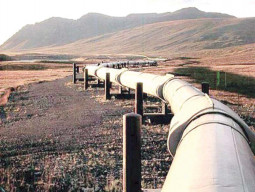
In the total production, hydroelectric power will have a 28% share, followed by furnace oil-based electricity at 17% and liquefied natural gas-based power at 15%. Local natural gas-powered electricity will contribute 12%, imported coal 10%, renewable energy sources and nuclear power 8% each and local coal 2%.
Load-shedding: Power sector governance - a lost hope
Recalling the difficult situation about three years ago, the water and power secretary told media on Thursday that in 2013-14 there was unpredictable load-shedding, higher unemployment of industrial labour, fuel shortage at power plants, rampant overbilling, years of delay in issuing letters of support and a weak transmission network that was not capable of carrying more than 15,500MW.

In that year, industrial and domestic consumers were facing power blackouts for 12 to 15 hours a day, which was reduced to six hours for urban and eight hours for rural regions in 2015 and the summer of 2016 with no outages for industrial units.
Dagha declared that load-shedding hours would come down to four in urban centres and stand at eight hours for rural areas in December 2016, which would be further cut to two and three hours for urban and rural areas respectively in June 2017. Later, outages would come to an end in January 2018, he said.
Policy priority: All efforts being made to end load shedding, says Shahbaz
Regarding the expected gradual increase in power production, Dagha claimed that production capacity would be 19,917MW against demand for 23,107MW between June and November 2016. From December 2016 to April 2017, the capacity will rise to 21,599MW and further go up to 25,080MW in June 2017. In December 2017, the capacity will stand at 27,600MW and in June 2018, it will be 30,938MW whereas demand will be 25,961MW and availability at 26,590MW.
He stressed that electricity transmission and distribution losses had come down to the lowest in the past 10 years at 18% in 2015. Its positive financial impact has been estimated at Rs10 billion.
On the other hand, bill recoveries, which were 92.3% in 2007, rose to 93.4% in 2015 with a beneficial financial impact of Rs51 billion.
Apart from these, the secretary said, the circular debt, which stood at Rs320 billion in October 2014, had been restricted to Rs329 billion.
Published in The Express Tribune, May 27th, 2016.
Like Business on Facebook, follow @TribuneBiz on Twitter to stay informed and join in the conversation.



















COMMENTS
Comments are moderated and generally will be posted if they are on-topic and not abusive.
For more information, please see our Comments FAQ